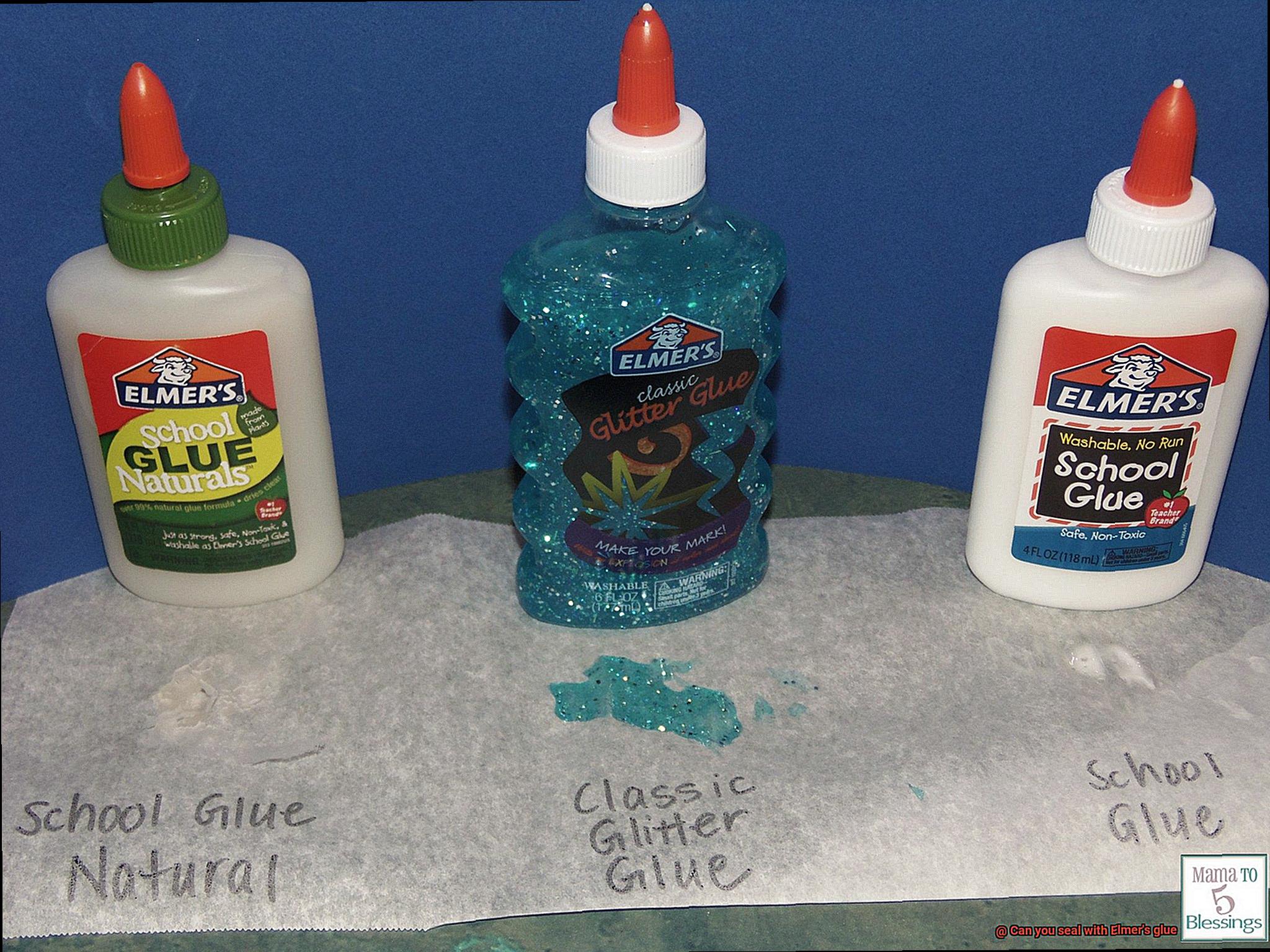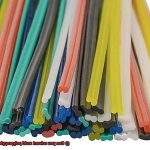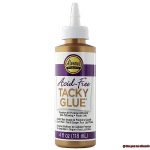Are you tired of using various types of glue to seal your crafting or DIY projects, but never quite achieving that perfect finish? Look no further than the trusty bottle of Elmer’s glue on your shelf. This household name for schoolchildren and creatives alike is not only an affordable option, but it can also be used as a sealant for a variety of projects.
Elmer’s glue is a water-based adhesive that dries clear and is widely available in stores, making it an easily accessible solution for all your sealing needs. But can it really be used as a sealant? The answer is yes. It can be applied to paper, wood, fabric, and even some plastics to achieve a smooth and shiny finish that protects against damage and wear and tear.
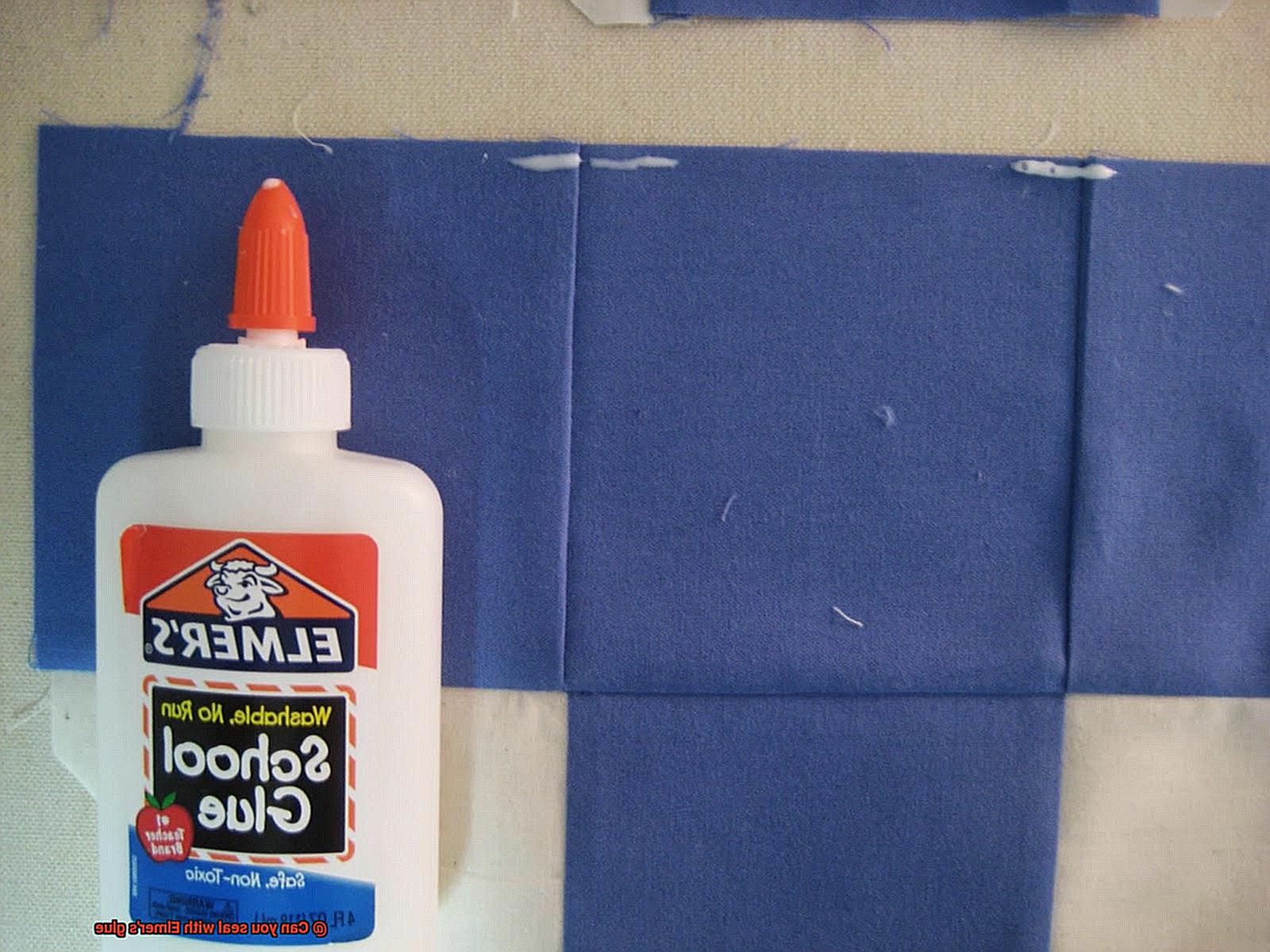
In this blog post, we’ll dive deeper into the world of Elmer’s glue as a sealant. We’ll explore the different types of projects that can benefit from this versatile adhesive, the steps needed to achieve a professional-looking finish, and some tips and tricks to ensure success. Whether you’re an arts and crafts enthusiast or a DIY novice, Elmer’s glue can be your ultimate go-to for sealing your next project. So let’s get started.
What is Elmer’s Glue?
Contents
When it comes to reliable adhesives, Elmer’s Glue is a name that stands out. This popular brand has been around since the 1940s and has become a household staple for its versatility, clear drying finish, and non-toxic formula that makes it safe for children to use.
Elmer’s Glue comes in three main forms: liquid, gel, and stick. The liquid form is perfect for paper crafts, woodworking, and household repairs, creating a strong bond between surfaces that dries clear for a professional finish. Meanwhile, the gel form is thicker and ideal for vertical surfaces or porous materials that require a more precise application. The stick form requires no drying time and is perfect for quick repairs.
One of the best things about Elmer’s Glue is its non-toxic and washable formula. Parents can be at ease knowing their children can use it safely without adult supervision, and any excess glue can be easily cleaned up with water. Moreover, Elmer’s Glue works wonders on fabrics as well, making it an excellent option for sewing and clothing repairs.
It’s important to keep in mind that while Elmer’s Glue can work well as a sealant, it might not be the best option depending on the project or surface you’re sealing. For instance, if you’re sealing something like wood or metal, you may want to consider using a more specialized sealant designed for those surfaces.
Can You Seal with Elmer’s Glue?
Elmer’s glue is a popular adhesive that can hold various materials together. But, did you know it can also be used as a sealant? However, it’s crucial to understand when and how to use it effectively.
The first thing to keep in mind is that diluting the glue with water is essential before using it as a sealant. This will make the glue easier to apply and ensure that it dries clear. The optimal ratio is mixing one part water with one part of Elmer’s glue.
Elmer’s glue works best as a sealant on porous materials like paper, cardboard, and even small cracks in wooden surfaces. However, it may not be the ideal choice for sealing non-porous surfaces such as glass or plastic.
Another consideration is the durability of the sealant over time. While Elmer’s glue works well for temporary projects or decorations, it may not hold up well under harsh conditions. For more permanent projects or items exposed to the elements, a stronger sealant may be necessary.
In conclusion, Elmer’s glue can be an excellent option for some sealing projects but may not be ideal for all. Diluting the glue with water and using it on porous materials can help ensure the best results. And remember to consider the durability of the sealant when deciding whether or not to use Elmer’s glue for your project.
Advantages of Using Elmer’s Glue as a Sealant
Look no further than Elmer’s glue. This time-tested adhesive has been used for decades, and it can also be used as a sealant in some applications. Here are five advantages of using Elmer’s glue as a sealant:
Firstly, Elmer’s glue provides unparalleled water-resistant properties when it dries, creating a barrier that protects surfaces from moisture damage. This makes it an ideal choice for sealing paper crafts, cardboard boxes, and other porous materials that are susceptible to water damage.
Secondly, Elmer’s glue is incredibly user-friendly. It can be easily applied with a brush or sponge, making it an excellent choice for sealing small areas or intricate designs. It dries quickly and can be layered with additional coats as needed.
Thirdly, unlike other sealants that can leave a hazy or yellowish residue, Elmer’s glue dries clear, making it perfect for use on projects where appearance is important. You won’t have to worry about any unsightly residue detracting from the beauty of your craftsmanship.
Fourthly, Elmer’s glue is non-toxic and safe to use around children and pets. This makes it an exceptionally suitable choice for crafting projects that involve sealing or protecting surfaces.
Finally, Elmer’s glue is incredibly cost-effective and readily available at most craft stores and online retailers. You won’t have to break the bank to get your hands on this fantastic sealant.
Disadvantages of Using Elmer’s Glue as a Sealant
Before diving in headfirst, it’s important to take note of the potential disadvantages that come with using this method.
One major concern is that Elmer’s glue is not waterproof. This means that if the item you are sealing will be exposed to moisture or water, the glue may not hold up well and could lead to damage or deterioration. This can be particularly problematic if you are sealing outdoor furniture or a garden decoration.
Another issue to consider is that Elmer’s glue can become brittle and crack over time. This is especially true if the surface it is applied to experiences a lot of movement or flexing. As the glue dries and hardens, it can become inflexible, making it prone to cracking or breaking apart.
Furthermore, Elmer’s glue may not adhere well to certain materials such as metal or plastic. This can make it an ineffective sealant for those surfaces and may require the use of a different type of adhesive.
Lastly, Elmer’s glue may not provide a strong enough bond for heavier objects, as it works best with lightweight materials like paper. If you are looking to seal something that requires a strong bond, it may be necessary to explore alternative options.
Alternatives to Elmer’s Glue for Sealing
Well, it’s time to spice things up and explore some alternatives. Luckily, there are a variety of options that can be used instead of this popular choice.

One of the most popular alternatives to Elmer’s glue for sealing is Mod Podge. This versatile glue dries clear and can be used as a sealant. It comes in a range of finishes, including matte, glossy, and satin, which allows you to choose the best finish for your project. Whether you’re working on crafting or DIY projects, Mod Podge is an excellent alternative to consider.
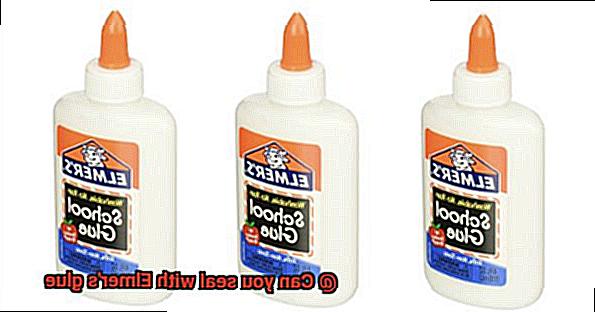
Another option is decoupage glue, specifically designed for decoupage projects that involve gluing paper or fabric onto surfaces. Not only does it provide a strong hold, but it also prevents wrinkling or bubbling of the paper or fabric. Like Mod Podge, decoupage glue also dries clear and can be used as a sealant.

If you’re working with wood surfaces, polyurethane is an excellent alternative to Elmer’s glue for sealing. It provides a durable and long-lasting finish that helps protect the wood from moisture and damage. Polyurethane can also be used on other surfaces like metal or concrete to provide a protective coating.
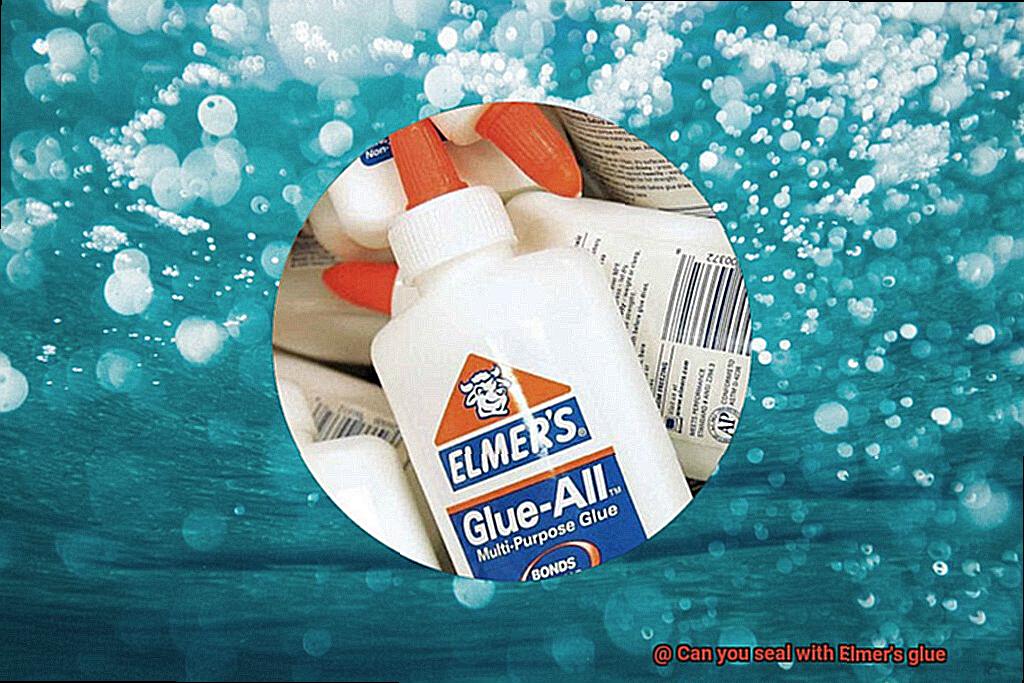
Tips for Successful Sealing with Elmer’s Glue
Successful sealing with Elmer’s glue is a breeze when you follow a few simple tips. Whether you’re working on a school project, crafting, or DIY-ing at home, Elmer’s glue can be an affordable and easy-to-use solution for sealing. Let’s dive into some key tips to ensure your sealing project is a success.
Tip #1: Use a Clean Surface
Before applying Elmer’s glue, make sure the surface you’re sealing is clean and free of any debris. This will ensure that the glue adheres properly. A dirty or dusty surface can cause the glue to peel or lift over time.
Tip #2: Apply the Glue Evenly
To achieve a strong and even seal, it’s important to apply Elmer’s glue evenly to the surface using a brush or sponge. Make sure that the entire surface is covered in a thin layer of glue. Applying too much glue can cause wrinkling or bubbling, so use restraint.
Tip #3: Let it Dry Completely
Allow the glue to dry completely before adding additional layers or moving on to the next step in your project. This will prevent any smudging or smearing. Depending on the thickness of the layer and environmental factors, drying time can take anywhere from a few hours to overnight.
Tip #4: Apply Additional Layers if Necessary
If you need a stronger seal, you can apply additional layers of Elmer’s glue. Allow each layer to dry completely before adding another layer. It’s also important to apply each layer in a different direction than the previous one to ensure complete coverage.
Tip #5: Seal the Edges
To create a strong seal, make sure to apply Elmer’s glue to the edges of your project as well. This will help prevent any lifting or peeling over time. Don’t overlook this crucial step.
Bonus Tip: Use a Topcoat
For added protection, consider applying a topcoat to your sealed project. This will help protect it from moisture and wear and tear. A waterproof sealer is a great choice if your project will be exposed to water.
VjCT4rHehdc” >
Also Read: Can you use Elmer’s glue as a sealant?
Conclusion
As we wrap up our discussion on whether Elmer’s glue can be used as a sealant, it’s clear that this versatile adhesive has many advantages. It’s non-toxic and washable, making it perfect for kids’ projects, and its clear drying formula ensures a polished finish. However, it’s essential to consider the project’s needs before deciding if Elmer’s glue is the best option.
While Elmer’s glue is ideal for porous materials like paper or fabric, non-porous surfaces may require an alternative sealant like Mod Podge or polyurethane. Additionally, harsh conditions may cause the glue to become brittle over time or lose its water-resistant properties.
That being said, when used correctly and in the right circumstances, Elmer’s glue can provide a cost-effective and user-friendly solution for sealing your projects. To ensure success, always apply it evenly on clean surfaces and let each layer dry completely before adding another one. Don’t forget to seal the edges for added protection and consider applying a topcoat for extra durability.

